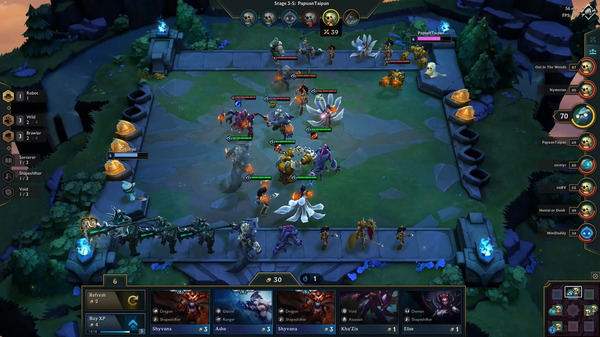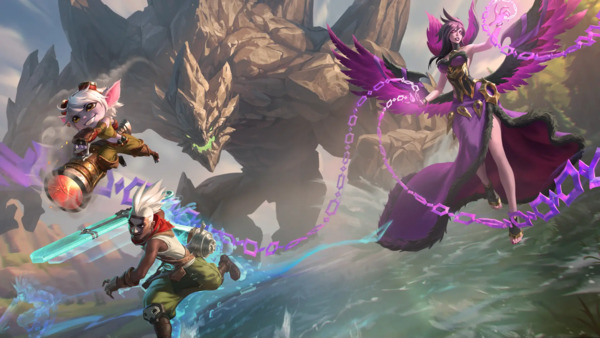Advertisement
Popular Now
Introduction
League of Legends (LoL) has been one of the most popular and influential multiplayer online battle arena (MOBA) games for over a decade. However, alongside its immense success, one persistent issue has plagued the game: toxicity. Toxic behavior in LoL, including verbal abuse, trolling, and intentional feeding, has long been a source of frustration for players worldwide. While Riot Games, the developers behind LoL, have implemented various systems to combat toxicity, the problem remains deeply embedded in the community. In this article, we will explore the impact of toxicity in League of Legends, its origins, its effects on gameplay, the community, and the efforts made to combat it. By understanding the underlying issues and how they manifest in the game, we can gain insight into what makes toxicity so difficult to address and what more could be done to create a healthier and more enjoyable experience for all players.
1. Defining Toxicity in League of Legends
What Does Toxicity Mean in LoL?
Toxicity in League of Legends refers to any behavior or actions that negatively affect the experience of other players. It includes a wide range of actions, from simple verbal abuse to intentionally sabotaging a team's chances of winning. The game’s competitive nature, coupled with its high-stakes environment, often amplifies negative emotions, leading to toxic interactions. Some common forms of toxicity include:- Verbal Abuse: Insulting teammates, throwing racial slurs, or engaging in derogatory language during the game.
- Inting (Intentional Feeding): Purposely dying to give the enemy team an advantage.
- Trolling: Deliberately disrupting the team by playing poorly, intentionally choosing inappropriate champions, or not following team strategies.
- AFK (Away From Keyboard): Leaving the game or refusing to participate in critical moments.
The Prevalence of Toxicity
Toxicity in LoL isn’t a new issue. Riot Games themselves have acknowledged the problem since the game’s early days. According to a 2019 report by Riot Games, a significant percentage of players experience some form of toxicity, especially in high-stakes ranked matches. Even with a dedicated reporting system, players continue to report incidents of verbal abuse, trolling, and other disruptive behaviors. But why does toxicity seem to be so prevalent in LoL? To understand this, we must first examine the competitive and social dynamics that contribute to it.2. Competitive Pressure and Its Role in Toxicity
The Psychological Impact of Competitive Gaming
League of Legends is inherently a competitive game. Players are matched based on their skill level in ranked matches, with the ultimate goal of climbing the ladder and reaching the highest ranks. However, this system creates a high level of pressure on players to perform well. When expectations are not met, frustration can quickly turn into negative behavior, such as blaming teammates or lashing out in chat. In competitive games like LoL, the following psychological factors often come into play:- Expectation vs. Reality: Players expect to win, and when they lose, especially due to perceived mistakes made by others, it can lead to frustration and toxic behavior.
- Stress and Anxiety: Playing for high stakes, such as ranked points or achieving certain milestones, increases the pressure. Players often take a loss personally, leading to emotional outbursts.
- Lack of Control: Many players feel a sense of powerlessness when their teammates make mistakes, which can lead to toxic comments or rage.
Escalation of Toxicity During Losing Streaks
One of the most common triggers for toxicity is a losing streak. The psychological phenomenon of loss aversion—the idea that people experience the pain of losing much more intensely than the pleasure of winning—plays a significant role in escalating toxicity. As players lose, their emotions become more volatile, and frustration can lead to toxic behaviors, such as calling out teammates or sabotaging games. Losing streaks also often lead to a downward spiral in terms of mental state, as negative feelings accumulate and worsen. This behavior is amplified when combined with the anonymity of the internet, where players feel less accountable for their actions and may behave more aggressively.3. The Role of Anonymity in Encouraging Toxicity
The Impact of Online Anonymity
The concept of deindividuation refers to the psychological phenomenon in which people lose self-awareness and become more likely to engage in behavior they would not typically exhibit in real life when they feel anonymous. Online gaming platforms like League of Legends provide players with a level of anonymity that enables toxic behavior.- Faceless Interaction: In LoL, players cannot see their teammates or opponents, which reduces the social pressure to behave appropriately.
- Lack of Immediate Consequences: Unlike face-to-face interactions, online behavior often lacks immediate social consequences. Players are less likely to feel guilty when insulting others or intentionally throwing the game.
- Escalating Aggression: Research has shown that anonymity often results in heightened aggression, as players feel emboldened to express frustration or rage without fear of direct repercussions.

4. The Ripple Effect of Toxicity on the Community
Toxicity as a Deterrent for New Players
The most significant consequence of toxicity in LoL is its impact on the player base. While veteran players may be desensitized to toxic behavior, new and casual players often face a hostile environment that drives them away from the game. This results in:- Increased Player Attrition: New players, especially those not familiar with the competitive nature of the game, may feel overwhelmed or discouraged by toxic teammates. As a result, they may leave the game before they’ve had a chance to truly engage with it.
- Toxicity Becomes the Norm: As more new players are driven away by toxic experiences, they may be replaced by players who have already internalized toxic behavior, perpetuating the cycle.
- Toxicity in Social Circles: When players form or join teams, they often bring their personal experience with toxicity, contributing to a negative, "toxic" culture in those communities.
5. Riot Games' Efforts to Combat Toxicity
The Reporting System and Penalization
Riot Games has made significant strides in combating toxicity through various systems designed to discourage toxic behavior. One of the primary tools is the reporting system, which allows players to report offenders for toxic actions such as verbal abuse or intentional feeding. If a player receives enough reports, they may face penalties, including:- Temporary or permanent chat bans for excessive verbal abuse.
- Ranked restrictions for intentional feeding or other forms of sabotage.
- Account suspensions for repeated offenses.
The AI Detection System: An Evolving Solution
One of the most promising tools Riot has introduced in its fight against toxicity is the AI-powered chat moderation system, which automatically detects and penalizes offensive language in real-time. This system scans the in-game chat for hate speech, racial slurs, and other forms of verbal abuse. Over time, the AI has improved in its ability to detect toxic language and issue warnings or penalties accordingly. While not perfect, the AI system represents a significant leap forward in reducing toxicity. However, this system alone cannot fully address the root causes of toxic behavior, such as frustration or competitive pressure.6. The Challenges in Tackling Toxicity
Balancing Free Expression and Player Conduct
One of the key challenges Riot Games faces is balancing the need for players to express themselves freely with maintaining a respectful and enjoyable gaming environment. League of Legends is a competitive game, and competitive players often experience heightened emotions, especially during stressful moments like losing streaks. However, allowing players to express frustration while also preventing harmful language and behavior is a difficult line to walk. Some players argue that overly strict enforcement of the reporting system stifles their ability to express themselves, while others feel that the punishments are not harsh enough to deter toxic behavior.The Deep-rooted Nature of Toxicity
Another challenge in combating toxicity is its deep-rooted nature within the community. Toxic behavior in LoL often begins with players mimicking the actions they have seen from others. As a result, players can internalize toxic behavior, viewing it as part of the culture rather than something to avoid. Changing this mindset is a significant hurdle, as it involves altering deeply ingrained behaviors and attitudes.
7. The Social Responsibility of the Player Base
Creating a Positive Environment
While Riot Games has an important role to play in combating toxicity, the responsibility for fostering a positive environment also falls on the players themselves. To create a more welcoming atmosphere in League of Legends, players must take it upon themselves to:- Lead by Example: Be positive, encouraging, and respectful to teammates, regardless of their performance.
- Report Toxic Behavior: Utilize the reporting system to help identify toxic players and encourage Riot Games to take action.
- Educate Others: Help new players understand the importance of positive interactions and discourage toxic behavior.
8. Long-term Solutions: Changing the Culture
Shifting the Narrative Around Toxicity
Addressing toxicity in League of Legends requires more than just technological solutions—it requires a cultural shift. Riot Games and the community must work together to change the narrative around toxic behavior, making it clear that it is neither acceptable nor productive. Some long-term solutions could include:- Promoting Positive Reinforcement: Reward players for positive actions, not just for winning.
- Creating In-Game Tools for Communication: Providing better non-verbal communication tools can help reduce misunderstandings that lead to frustration and toxicity.
- Community Education Programs: Offering guides or in-game tips about sportsmanship and positive behavior could help players understand how to engage respectfully.

9. The Role of the Community in Healing Toxicity
Empowering Players to Speak Up
One potential way to combat toxicity is by empowering players to speak up and challenge toxic behaviors within the community. Players can create or join communities that emphasize positivity, sportsmanship, and respect. These positive communities can offer a refuge for players who are tired of dealing with toxic environments and provide a platform for players to share tips and experiences about maintaining a healthy mindset in competitive play. By forming these pockets of positivity, the League of Legends community can begin to heal itself from the toxicity that has plagued it for so long.10. The Road Ahead: Can LoL Overcome Toxicity?
Looking Toward a Healthier Future
The battle against toxicity in League of Legends is ongoing, and while significant strides have been made, the fight is far from over. Riot Games' tools, such as the reporting system and AI chat moderation, are critical in the fight, but they must be complemented by a shift in the broader gaming culture. Players themselves must take responsibility for fostering a more positive community by setting an example and calling out toxic behavior. Ultimately, the road ahead for League of Legends requires collaboration between Riot Games and its player base. If both parties work together to address toxicity at its core, the game can continue to thrive as a competitive yet enjoyable experience for players worldwide.















